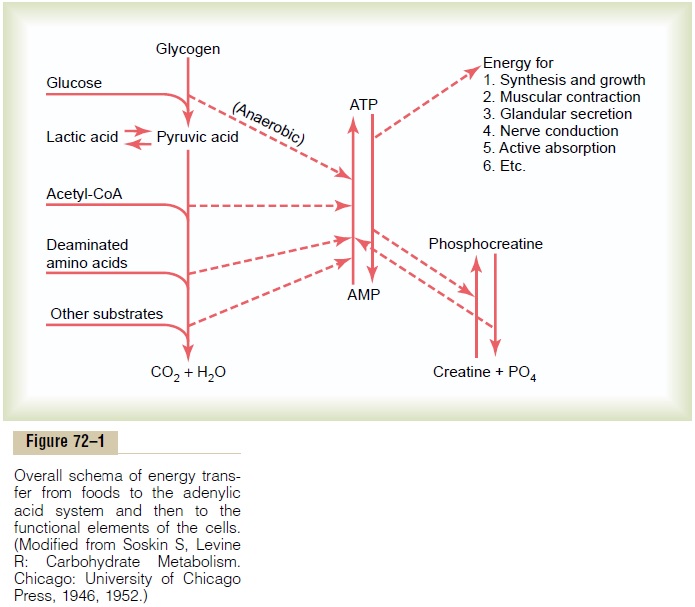Chapter: Medical Physiology: Energetics and Metabolic Rate
Summary of Energy Utilization by the Cells
Summary of Energy Utilization by the Cells
With the background of the past few and of the preceding discussion, we can now synthesize a compos-ite picture of overall energy utilization by the cells, as shown in Figure 72–1. This figure demonstrates the anaerobic utilization of glycogen and glucose to form ATP and the aerobic utilization of compounds derived from carbohydrates, fats, proteins, and other substances to form additional ATP. In turn, ATP is in reversible equilibrium with phosphocreatine in the cells, and because larger quantities of phosphocreatine are present in the cells than ATP, much of the cells’ stored energy is in this energy storehouse.

Energy from ATP can be used by the different func-tioning systems of the cells to provide for synthesis and growth, muscle contraction, glandular secretion, nerve impulse conduction, active absorption, and other cellular activities. If greater amounts of energy are demanded for cellular activities than can be provided by oxidative metabolism, the phosphocreatine store-house is used first, and then anaerobic breakdown of glycogen follows rapidly. Thus, oxidative metabolism cannot deliver bursts of extreme energy to the cells nearly as rapidly as the anaerobic processes can, but at slower rates of usage, the oxidative processes can con-tinue as long as energy stores (mainly fat) exist.
Related Topics